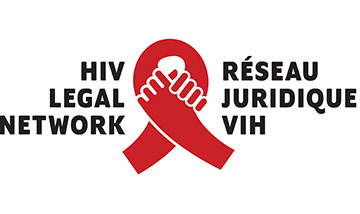By Maurice Tomlinson, Senior Policy Analyst, Canadian HIV/AIDS Legal Network
October 19, 2017
In 2010, I received an email from a stranger who promised to kill me if I continued to advocate for LGBTQI human rights in Jamaica. I was urged to go to the police and make a report — the first time I would be doing so on my own behalf.
The officer at the Freeport Police Station in Montego Bay told me that he hated gays and we make him sick. Though he promised to investigate the threat, weeks passed and I received no news. Eventually, I reported the matter to the Assistant Commissioner of Police, who advised me that the situation was unfortunate but would not change until the country’s 1864 anti-sodomy was repealed — an approach I have decided to pursue but that did not address the immediate threat.
I therefore reported the matter to the Inter-American Commission on Human Rights (IACHR), which then issued the first-ever Precautionary Measure against a state on behalf of an LGBTQI human rights defender. The IACHR found that I faced an immediate threat and required the Jamaican government to work with me and devise a protocol to ensure my safety. Though the police eventually contacted me (to implement the measure), the sender of the email was never identified and so the threat remained omnipresent.
Needless to say, I have been very wary of interacting with Jamaican police ever since.
So you can imagine my surprise when the planning team for Montego Bay Pride decided to paint the Freeport Police Station as this year’s social justice project. As the lead coordinator, I was asked to draft and hand-deliver a letter to the commanding officer requesting permission to paint — a task I was less than thrilled to do.
In light of my history with the police, I was not too keen on painting the station. I also know that the Freeport Police are not too keen on LGBTQI people. I used a large Montego Bay Pride rainbow banner as the letterhead, anticipating that our request would be denied. When I delivered my letter, the commanding officer asked only one question: “What sort of people will be doing the painting? People like you?” I said yes. He said that he was very interested and would get back to me. Soon after he advised, to my shock, that approval for the painting was granted.
So, on October 14, a group of twelve Montego Bay Pride volunteers turned up to paint the station, and despite the punishing heat, we managed to provide a partial facelift to the facade. A superintendent even arranged for some officers in uniform to take a picture with us and the rainbow Montego Bay Pride banner. The officers had been reluctant to do so at first.
The day was certainly transformational for many of us. We learned to not judge an institution by the actions of some individuals. But there is still a long way to go to repair relationships between the police and Jamaica’s LGBTQI community. This antagonistic relationship is why uniformed officers are not asked to participate in our Pride events, as many of our members still feel traumatized by ongoing arbitrary police action. But the community is not waiting on the police to come to us — we are going to them. This outreach includes offering to paint another section of the Freeport Police Station for Montego Bay Pride 2018. Montego Bay Pride has also proposed to deliver LGBTQI sensitivity training to the officers at the Freeport station. The Canadian HIV/AIDS Legal Network, a key sponsor of Montego Bay Pride, has delivered this award-winning training in seven other Caribbean countries.
The LGBTQI community members in Jamaica refuse to be victims. We are actively engaged in our own liberation, and this engagement includes building — or painting — a bridge to an institution that traditionally oppressed us.



